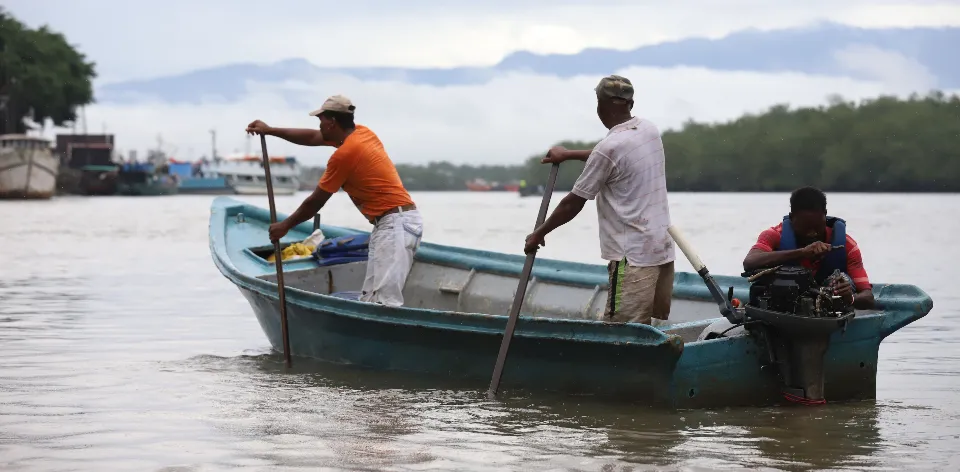PRESS ROOM
 12/4/2024
12/4/2024
Artisanal Fishing, a Livelihood Activity Boosting the Economy in Buenaventura

Within the framework of the first plenary session of the Agricultural Statistics Table, the central theme of the day was information serving the territories in the Colombian Pacific.
Bogotá D.C., (@Minagricultura, @UPRAColombia, @claudialili76). With more than 80 producers and local stakeholders, the first plenary session of the Agricultural Statistics Table in 2024 was held in Buenaventura. The event featured the participation of different national entities such as DANE, ADR, ICA, Agrosavia, and Aunap as speakers, in addition to, of course, the technical secretariat of the table led by the Rural Agricultural Planning Unit, UPRA.
"Today, regional actors are the main protagonists because they are the ones who make use of the information, and we are working to encourage access in each of the country's regions. Taking the Agricultural Statistics Table to the territories allows us to address central issues such as artisanal fishing in Buenaventura and to listen to the information needs of agricultural producers," said Oscar Pedraza, a professional at UPRA and leader of the technical secretariat of the Agricultural Statistics Table.
Currently, artisanal fishing is one of the priority chains for the National Government, and in recent years, the importance of the chain has been highlighted, with various guidelines developed for activities nationwide. According to data from the Colombian Fishing Statistical Service System (Sepec) of Aunap, 19.8 million kilograms of fish arrived at collection centers in different basins nationwide, and the main species are: bocachico, nicuro, yellowfin tuna, pincho, and black spot snapper.
"About 20 years ago, the country had great development in industrial fishing, but surprisingly, with changing needs, artisanal fishing has begun to have significant recognition and development. So much so that currently, apart from tuna, the ratio of industrial and artisanal fishing is 30% - 70% respectively. Today, it is even more important to socialize the information tools available, as statistical exercises are carried out for that purpose, so that all sectoral actors can have the necessary inputs for decision-making," added Carlos Barreto, a biologist and fishing advisor at Aunap.
On the other hand, producers highlighted the importance of these spaces: "in our territories, there are families of artisanal fishermen, but we are not traders because everything is for daily consumption. With these spaces, we can stay updated on government programs and sectoral advances," said Lirio Quiroz, belonging to the indigenous reserve of Parana Subirana.
"These spaces allow us to know the existing statistical data, and in the case of Buenaventura as a special district, we need to have data to generate planning that allows the development of our communities," said Felipe Angulo, rural development leader of the Buenaventura Civic Strike Movement. He added that "we are at the opportune moment to generate an agricultural characterization and have pertinent information that allows planning the agro-industrial future of Buenaventura."
The Agricultural Statistics Table will continue to develop spaces where different actors of the productive chains can access and know the information tools available for the integral planning of the future of the agricultural sector. In the case of artisanal fishing, hand in hand with different actors such as ICA, AUNAP, Agrosavia, among others, statistical development and sectoral planning will continue.

